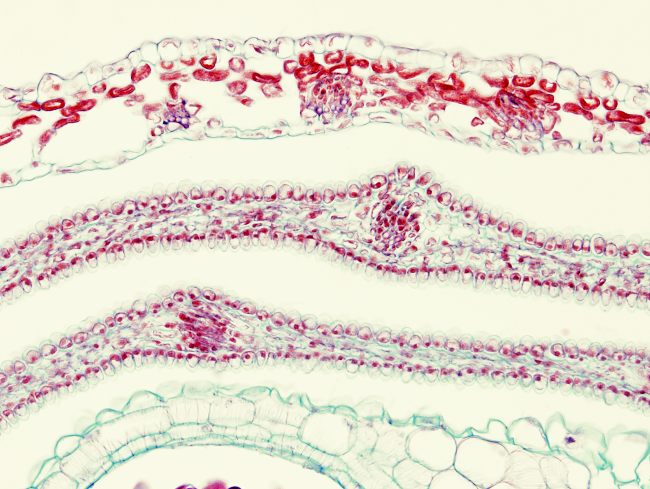
Petals consist on an adaxial epidermis (facing the inner part of the flower), and an abaxial epidermis (toward the exterior of the flower). They are thin cell layers and their apical cell wall is not much cutinized. Intermingled with the epidermal cells, there are osmophores, which are secretory glands releasing volatile oils. Chromoplasts, cell responsible for the color of the flower, are also frequently found in petals. They contain pigments like carotenoids that, together with other pigments, are found in the cytoplasm. A lacunar-like parenchyma is found between both epidermal layers. Sepals are formed of parenchyma distributed between the two epidermal layers cells. These parenchyma cells contain chloroplasts. The organization of sepals is more similar to the organization of a typical leaf. Both petals and sepals contain non-well-developed vascular bundles, without sclerenchyma tissue, that are distributed in a branched organization.